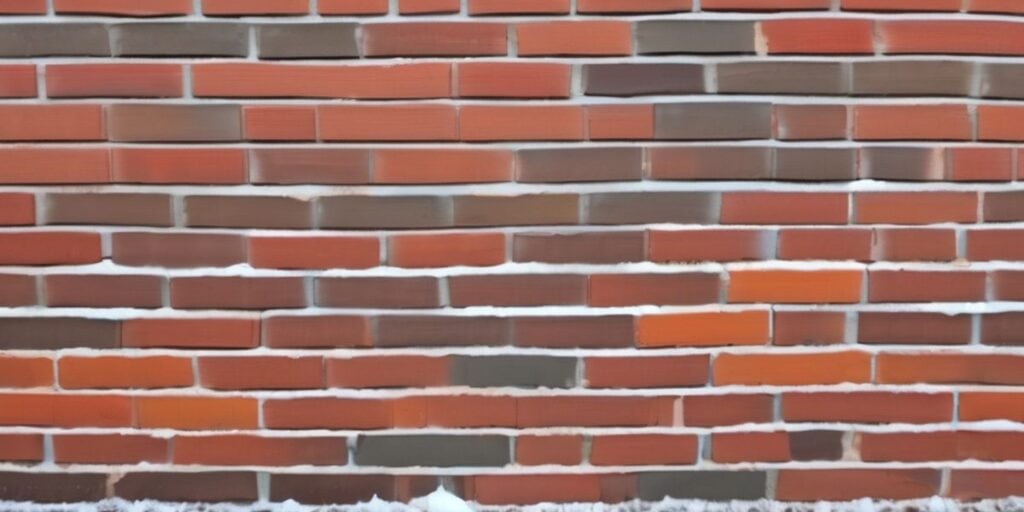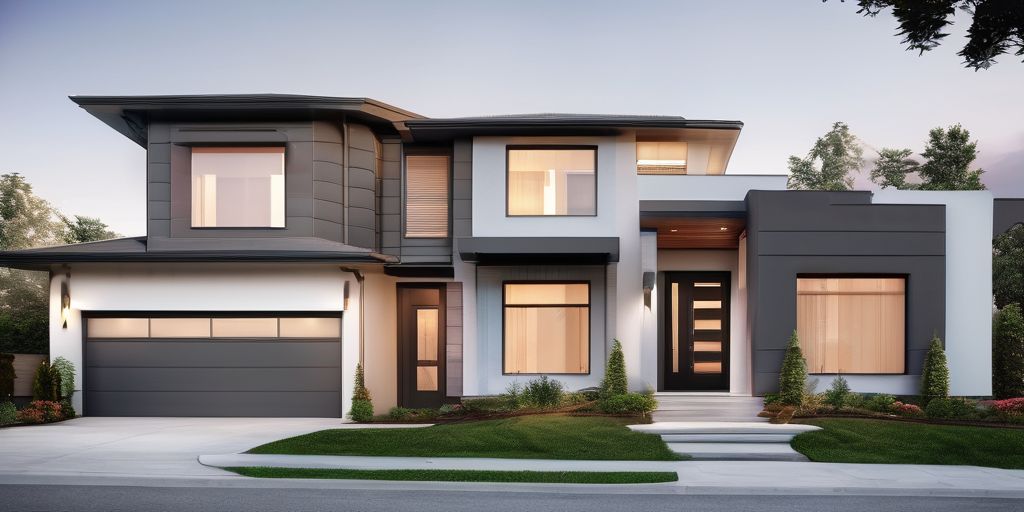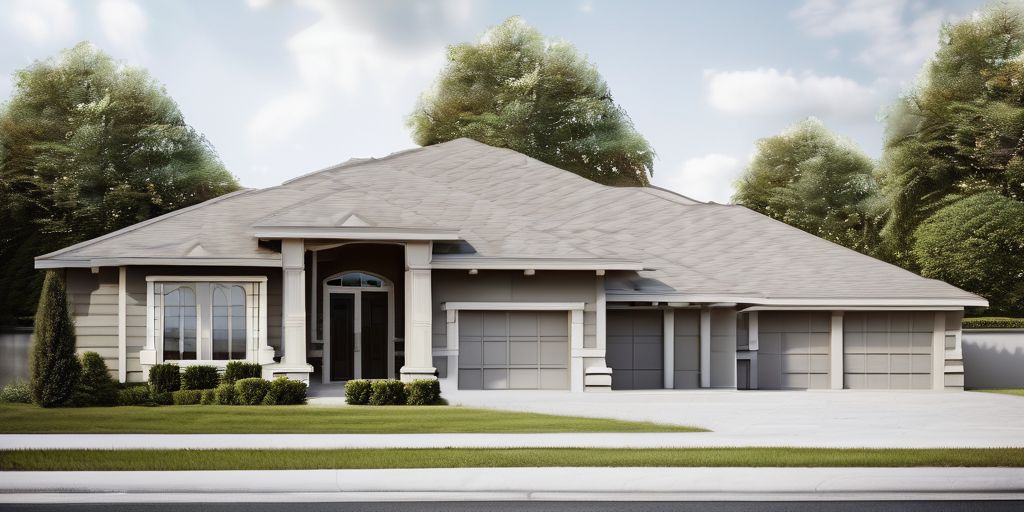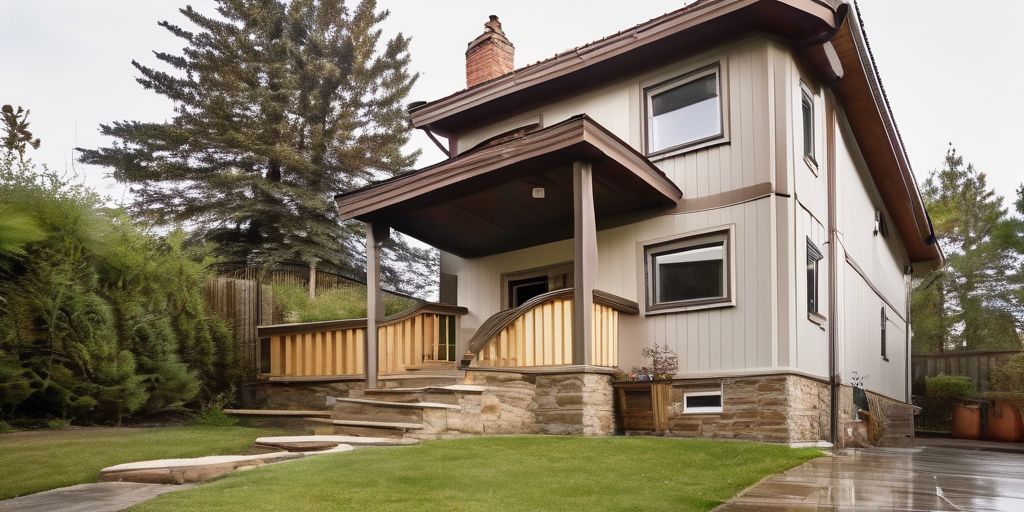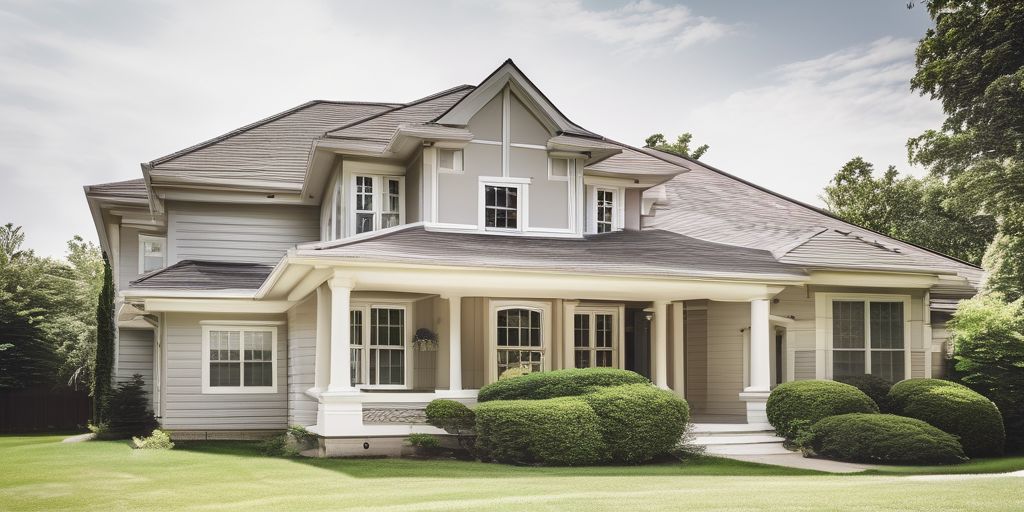Painting the exterior brick of a home can significantly enhance its aesthetic appeal and protect the structure from environmental elements. However, the process comes with its own set of challenges that require careful planning and execution. This article delves into the various stages of painting exterior brick, from preparation to maintenance, and provides practical advice for troubleshooting common issues that may arise. By following these guidelines, homeowners and professionals alike can achieve a beautiful and durable finish that will stand the test of time.
Key Takeaways
- Proper preparation of the brick surface, including cleaning and repairing, is essential for a lasting paint job.
- Choosing the right type of paint and tools is crucial for achieving a smooth and durable exterior finish.
- Applying painting techniques that ensure even coverage and adapting to weather conditions can prevent common painting problems.
- Being proactive in addressing challenges such as peeling, blistering, and efflorescence ensures the longevity of the paintwork.
- Regular maintenance and timely touch-ups are key to preserving the appearance and integrity of painted brick exteriors.
Preparing Your Brick Surface for Painting
Cleaning the Bricks Thoroughly
Before you embark on the transformative journey of painting your exterior bricks, a proper assessment of the surface is crucial. It’s not just about aesthetics; it’s about ensuring the paint adheres well and stands the test of time. Start by inspecting your bricks for any dirt, mildew, or biological growth.
Cleaning your bricks isn’t just a cursory step; it’s foundational to the painting process. Use a gentle, yet effective, cleaning solution and a stiff-bristle brush to scrub the surface. For those with vintage bricks, take extra care to avoid harsh chemicals that can erode the brick’s character and compromise its integrity.
Remember, a clean brick surface is the canvas for your painting project. Ensuring it’s free from contaminants will help your paint job last longer and look better.
After cleaning, rinse the bricks thoroughly with water to remove any residual cleaning agent. Allow the surface to dry completely before moving on to repairs or primer application. This patience in preparation can save you from future headaches of peeling or blistering paint.
Repairing Cracks and Damage
Before you can begin painting, it’s crucial to ensure that your brick surface is in the best possible condition. Addressing any cracks or damage is a step you cannot skip. Here’s how to tackle this task effectively:
- Start by removing any loose material from the damaged area.
- Clean the crack thoroughly to ensure proper adhesion of the repair material.
- Use a masonry filler or sealant designed for exterior use to fill the crack.
- Smooth the filler with a putty knife and allow it to dry completely before proceeding.
Remember, a well-prepared surface is key to a successful paint job. Taking the time to repair your bricks will pay off in the long run with a smoother, more durable finish.
Once the filler has set, it’s important to sand the area lightly to create a uniform surface for the primer and paint. Regular maintenance, including sealing the bricks, can help prevent future damage and extend the life of your paint job. If you encounter major issues, don’t hesitate to consult a professional.
Applying Primer for a Lasting Finish
Before you embark on the transformative journey of painting your exterior bricks, it’s imperative to lay the groundwork with a quality primer. Proper preparation and priming are essential for effective adhesion, ensuring that your paint not only looks great but also withstands the test of time. Here’s how to get it right:
- Start by selecting a primer that’s specifically designed for masonry or brick surfaces. This will help the paint adhere better and last longer.
- Apply the primer evenly across the surface, using a brush, roller, or spray. The method you choose can affect the finish, so pick one that suits your skill level and the texture of your bricks.
- Allow the primer to dry completely before proceeding with painting. This might take longer in humid or cold weather, so plan accordingly.
Remember, the goal of priming is not just to cover the bricks but to create a solid, uniform base that will support the layers of paint to come.
Choosing the right paint for brick surfaces is crucial. Use breathable paints like acrylic latex, and avoid oil-based paints to prevent trapping moisture that can lead to peeling. Always consult the manufacturer’s instructions for the best results.
Choosing the Right Paint and Tools
Selecting the Best Paint for Exterior Bricks
When it comes to painting the exterior of your home, selecting the right paint is crucial for both the appearance and longevity of your brickwork. The best paint for exterior bricks will be durable, weather-resistant, and compatible with the brick’s porosity.
Exterior painter experts recommend acrylic latex paint for its ability to breathe, allowing moisture to escape and reducing the risk of peeling. Here’s a quick guide to help you choose:
- Acrylic Latex Paint: Ideal for most exterior brick surfaces; offers excellent coverage and a flexible finish.
- Elastomeric Paint: Best for bricks with slight imperfections; it has a thicker consistency and can bridge small gaps.
- Masonry Paint: Specifically designed for masonry surfaces; provides a strong bond and resists mildew.
Remember, the key to a successful paint job is not just the paint itself but also the preparation and application. Proper cleaning, priming, and using the right tools are just as important.
When planning your project, consider the local weather conditions and the brick’s exposure to the elements. This will ensure that your paint selection will stand up to the environment and keep your home looking great for years to come.
Essential Tools for a Smooth Application
Having the right tools at your disposal is crucial for achieving a professional-looking finish when painting exterior bricks. A high-quality paintbrush, roller, or sprayer can make all the difference in the application process. For those considering eco-friendly brick paint, it’s important to weigh the pros and cons of using a brush versus a roller. Brushes can offer more precision around edges and intricate areas, while rollers can cover large, flat surfaces more quickly.
- Paintbrush: Ideal for detailed work and smaller areas.
- Roller: Best for covering large surfaces evenly.
- Paint sprayer: Provides a smooth finish; great for hard-to-reach places.
Remember, applying thin coats and allowing sufficient drying time between them is key to avoiding drips and ensuring a lasting finish.
Quality tools are an investment in the longevity of your paint job. Be patient and maintain your painted surface with regular cleaning to keep it looking fresh for years to come. Combining spray and brush techniques can maximize both the efficiency and quality of your exterior paint job.
Understanding Paint Finishes and Durability
The finish of your exterior brick paint not only affects the appearance but also plays a crucial role in the paint’s longevity and maintenance requirements. Choosing the right finish can significantly impact the durability of your painted surface. Here’s a quick guide to help you understand the different types of finishes available:
- Flat/Matte: Offers a non-reflective appearance, ideal for hiding surface imperfections. However, it’s less durable and harder to clean.
- Eggshell: Has a slight sheen and is easier to clean than flat finishes. It’s a good balance between matte and gloss for exterior use.
- Satin: Provides a medium-level sheen and is suitable for high-traffic areas due to its durability and ease of cleaning.
- Semi-Gloss: Highly durable and easy to clean, making it perfect for trim and accents.
- Gloss: Offers the highest level of sheen and durability, ideal for doors and features that you want to stand out.
When considering the environmental impact of your paint choice, look for options that offer long-lasting protection to minimize the need for frequent repainting. This not only saves you time and money but also reduces the environmental footprint of your painting project.
Remember, the right finish will not only enhance the beauty of your home but also protect it from various weather conditions and wear over time. Choose a finish that aligns with your aesthetic preferences and the practical demands of your home’s exterior.
Mastering the Painting Process
Techniques for Even Coverage
Achieving even coverage when painting exterior bricks is crucial for both aesthetics and protection. Proper technique is key to preventing patchy areas and ensuring a uniform look. Here are some tips to help you master the painting process:
- Start with a primer to create a smooth, even base. This will help the paint adhere better and provide a consistent foundation.
- Use a high-quality roller or brush designed for exterior surfaces. These tools can make a significant difference in application quality.
- Apply paint in a systematic way, working from top to bottom to avoid drips and streaks.
- Consider the ‘W’ or ‘M’ technique for rolling on paint, which helps distribute it more evenly across the surface.
Remember, patience and attention to detail go a long way in achieving professional-looking results.
Always allow the first coat to dry completely before applying a second coat. This not only ensures proper adhesion but also helps to identify any areas that may need additional coverage.
Dealing with Weather Conditions
When painting the exterior of your home, weather conditions play a pivotal role in the outcome of your project. Proper planning is essential to ensure that your hard work withstands the test of time. Here are some tips to help you navigate the challenges posed by the weather:
- Monitor the forecast: Aim for a stretch of days with mild temperatures and low humidity. Extreme heat or cold can affect paint adhesion and drying times.
- Avoid rain: Water can wash away fresh paint or cause it to blister. Wait for a clear weather window before starting.
- Wind considerations: High winds can lead to debris sticking to wet paint and uneven drying. Choose a calm day for your painting task.
Temperature and humidity are critical factors to consider. Paint manufacturers often specify the optimal conditions for their products. Here’s a quick reference guide:
| Temperature Range | Humidity Level |
|---|---|
| 50 – 70 F (10 – 21 C) | 40 – 70% |
Remember, the time of day matters too. Early morning or late afternoon are often ideal to avoid the intense midday sun.
By taking these precautions, you can ensure that your painted brick exterior remains vibrant and durable, reflecting your home’s character and standing up to the local climate.
Timing Your Project: When to Paint
Choosing the right moment to start painting your exterior bricks is as crucial as the painting process itself. Weather conditions play a significant role in how well the paint adheres and dries. Here are a few tips to help you time your project perfectly:
- Aim for a day with mild temperatures and low humidity. Extreme heat or cold can affect paint’s drying time and finish.
- Avoid painting in direct sunlight, as this can cause the paint to dry too quickly and unevenly.
- It’s best to paint when there’s no rain in the forecast for at least 24 hours.
Remember, patience is a virtue in painting. Allowing for the right conditions can make the difference between a rushed job and a lasting finish.
When planning your painting schedule, consider the season and your local climate. Spring and fall typically offer the most favorable conditions for painting. However, always check the weather forecast before picking up your brush. By doing so, you ensure that your hard work results in a beautiful and durable exterior.
Addressing Common Painting Challenges
Preventing Peeling and Blistering
To ensure your painted brick exterior remains vibrant and intact, proactive maintenance is crucial. Peeling and blistering can detract from the beauty of your home and may signal deeper issues. Here are some tips to prevent these common challenges:
- Identify and address moisture sources: Moisture is a primary culprit for peeling paint. Inspect your brickwork regularly for signs of water infiltration and take steps to rectify any problems.
- Choose the right paint: Not all paints are created equal. Select a paint that is specifically designed for exterior brick surfaces and weather-resistant.
- Apply paint correctly: Follow the manufacturer’s instructions for application and drying times to ensure the best adhesion and longevity.
Remember, regular maintenance and inspection of brick walls are essential. Addressing moisture issues promptly can save you time and money in the long run.
If you encounter persistent peeling or blistering, it may be time to seek professional advice. A fresh coat of paint not only enhances curb appeal but also serves as a protective layer for your brickwork.
Tackling Efflorescence Issues
Efflorescence, a white crystalline deposit of salts, can be a persistent issue when painting exterior bricks. It’s essential to address efflorescence before painting to ensure a clean surface and optimal paint adhesion. Here’s how to tackle this challenge:
- Identify the presence of efflorescence, typically visible as a powdery residue on the brick surface.
- Clean the affected area with a solution designed to remove efflorescence. Muriatic acid is often recommended, but always follow safety guidelines when using chemicals.
- Rinse the bricks thoroughly with water after cleaning to remove any residual acid or salts.
- Dry the surface completely before proceeding with priming or painting.
Remember, prevention is key. Ensure proper drainage and consider waterproofing to minimize the risk of efflorescence reoccurring.
By following these steps, you can effectively prepare your brick surface, creating a strong foundation for a beautiful and lasting exterior paint job.
Navigating Around Windows and Doors
Painting around windows and doors requires precision to ensure a clean, professional finish. Protecting the glass and frames from paint splatters and drips is crucial. Here’s how to tackle this task effectively:
- Use painter’s tape to cover window and door frames, creating a barrier against any stray brush strokes.
- Employ a cut-in technique with a smaller brush to paint the edges neatly.
- Remove the tape before the paint dries completely to avoid peeling off any fresh paint.
When painting brick around windows and doors, it’s important to consider the drying time and weather conditions. A sudden rain can ruin your hard work, so always check the forecast before starting.
Remember, patience is key when painting these intricate areas. Rushing can lead to mistakes that are difficult to correct.
Incorporating popular paint techniques can enhance the overall look of your brick exterior. For instance, a color wash can create a natural textured look that complements the architectural features around windows and doors.
Maintaining Your Painted Brick Exterior
Routine Cleaning and Care
Maintaining the painted exterior of your brick home is crucial for preserving its beauty and longevity. Regular cleaning is a key component of this maintenance routine. Here’s a simple guide to keeping your painted bricks in top condition:
- Gently wash the surface with a mixture of water and a mild detergent.
- Use a soft-bristled brush to remove dirt and debris without damaging the paint.
- Rinse the area thoroughly with clean water to avoid leaving any soapy residue.
It’s important to inspect your painted bricks periodically for any signs of damage or wear. If you spot any issues, address them promptly to prevent further deterioration. For instance:
- Look for cracks or chips in the paint and apply touch-ups as needed.
- Check for mold or mildew growth, especially in shaded or moist areas, and clean them with a suitable anti-fungal solution.
By adhering to a consistent cleaning schedule, you can extend the life of your painted brick exterior and keep it looking fresh and vibrant for years to come.
Remember, the best defense against the elements is a quality paint job. Selecting weather-resistant paint is especially beneficial in sunny areas, ensuring both durability and aesthetic appeal.
Touch-Up Strategies for Painted Bricks
Keeping your painted brick exterior looking fresh doesn’t have to be a daunting task. With the right touch-up strategies, you can easily address minor imperfections and maintain the beauty of your home’s facade. Here are some tips to help you with touch-ups:
- Identify the areas that need attention. Look for chips, cracks, or peeling paint on your bricks.
- Prepare the surface by cleaning it and removing any loose paint. This ensures that your touch-ups adhere properly.
- Match the paint color as closely as possible. If you have leftover paint, that’s perfect; otherwise, take a chip to your local store for a color match.
- Use a small brush or roller for precision and to avoid over-painting the surrounding areas.
Remember, touch-ups are just that – small, targeted fixes to keep your painted bricks looking their best. They are not a substitute for a full repaint, which may be necessary after several years or when extensive wear is visible.
For areas with more significant damage, such as repointing brick or dealing with rust-stained areas, it’s important to address these issues before applying touch-ups. This might involve cleaning the brick joints thoroughly or priming bare wood and filler spots. By taking care of these problems first, your touch-ups will blend seamlessly and last longer.
When to Repaint: Recognizing the Signs
Recognizing when to repaint your exterior brick is crucial for maintaining the aesthetic appeal and structural integrity of your home. Regular inspections are key to identifying the need for a new coat of paint. Look for fading, chipping, or peeling as clear indicators that it’s time to refresh your brickwork.
Durability of paint varies based on the quality of the product and the conditions it’s exposed to. Here’s a simple checklist to help you determine if repainting is necessary:
- Fading color intensity
- Chipping or flaking of the paint surface
- Peeling paint, especially on areas exposed to the sun or rain
- Signs of mold or mildew
- Presence of efflorescence, which appears as a white powdery substance
Remember, proactive maintenance can extend the life of your paint job. Immediate repairs and touch-ups can prevent minor issues from becoming major problems.
If you notice bulging bricks or other structural anomalies, it’s important to address these issues before repainting. These could be signs of underlying problems that need to be resolved to ensure the longevity of your paint and the safety of your home.
Maintaining the exterior of your painted brick home is crucial for preserving its beauty and durability. At We Paint Siding, we specialize in transforming your property with high-quality paint jobs that not only enhance its appeal but also protect it from the elements. Our expert team is dedicated to delivering a flawless finish, ensuring your home stands out in the neighborhood. Don’t let your brick exterior lose its luster; visit our website to explore our services and book a free estimate today. Let us help you keep your home looking vibrant and fresh for years to come.
Conclusion
We hope this guide has illuminated the path for your exterior brick painting projects and equipped you with the knowledge to tackle common issues with confidence. Remember, preparation is key, and understanding the unique characteristics of brick can make all the difference in achieving a stunning and durable finish. Whether you’re dealing with efflorescence, paint peeling, or color dilemmas, there’s always a solution at hand. Happy painting, and may your home’s exterior be as vibrant and enduring as your efforts!
Frequently Asked Questions
How do I properly clean bricks before painting?
To clean bricks before painting, use a pressure washer or a scrub brush with soapy water to remove dirt, grime, and efflorescence. Let the surface dry completely before proceeding with repairs or priming.
What kind of primer should I use on exterior brick?
Use a high-quality, latex-based primer designed for masonry or brick surfaces. It should be able to seal the porous surface and provide a good base for the paint to adhere.
Can I paint over old paint on brick?
Yes, but you must ensure the old paint is in good condition and firmly adhered to the brick. Remove any loose or peeling paint and clean the surface thoroughly before applying new paint.
What is the best weather condition for painting exterior brick?
The best weather for painting brick is a dry, overcast day with temperatures between 50-80°F (10-27°C). Avoid painting in direct sunlight or when rain is expected within 24 hours.
How do I prevent paint from peeling on exterior brick?
To prevent peeling, ensure the brick is clean and dry before painting, use the right primer, and choose high-quality paint designed for exterior masonry. Apply paint during suitable weather conditions and follow the manufacturer’s instructions for drying times.
How often should I repaint my exterior brick?
Repainting intervals depend on the quality of the paint, the climate, and the level of exposure to the elements. Generally, a well-painted brick exterior can last 15-20 years. Look for signs of fading, chipping, or damage to determine when to repaint.

